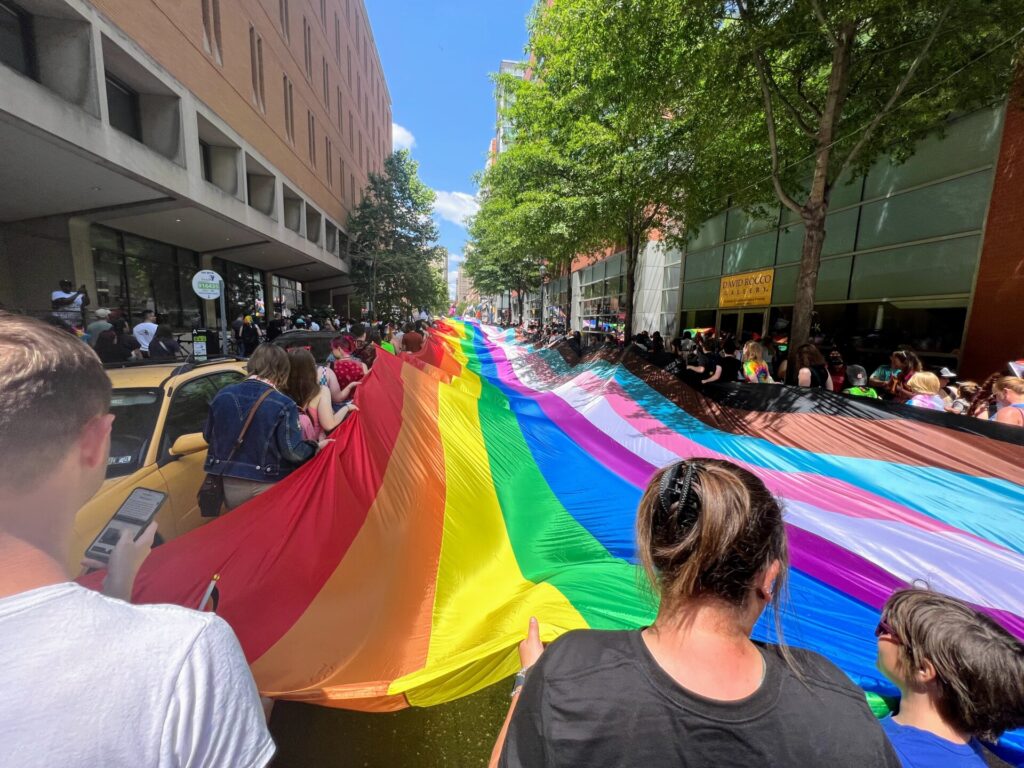The celebrated Menier Chocolate Factory production of The Color Purple, the Musical is now at the Forrest Theatre. Based upon the novel by Alice Walker, The Color Purple, the Musical, has a book by famed playwright Marsha Norman, with music and lyrics by three famous musicians, Brenda Russell, Alee Willis, and Stephen Bray. John Doyle designed the set, musical staging, and directed this production.
According to the program note, this production takes place between the years 1909 and 1949 in Georgia. That said, it could be set in any rural area of the South in any roughly approximate time period, since we only hear about some soldiers invading an African village at one point in the story. The one unit set is also intriguing. Part television stage set, and part modern church architecture, we do get the feeling that this is a religious lesson in how faith in God will someday be rewarded.
The plot of The Color Purple, the Musical opens with a joyous revival meeting of musical numbers which gives way to the tragedy of two girls raised by an abusive father, where one girl is given to an abusive husband in marriage. The man, known mostly as Mister, never allows the missing sister’s letters to reach his wife Celie, the heroine who is part Job and part Candide. Celie suffers any number of torments and domestic slavery, until a lesbian affair with her husband’s mistress, Shug Avery, who for once awakens physical tenderness in Celie. Much is said about God in the plot, with Celie at one point doubting that any god would care about a Black woman. At the musical’s conclusion, Celie discovers that God, indeed, works in mysterious ways, and is in each one of us.
The skilled artists on stage keep us riveted to the plot and characters. In addition to Celie, finely played by Adrianna Hicks, Shug Avery, played by Carla R. Stewart is outstanding, especially in her big, sexy number filled with sexual innuendo, “Push da Button.” Carrie Compere as Sofia, the woman who marries Harpo, is master of the stage during any of her dialogues, and especially when she sings “Hell No!” which elicited many shouts of approval from the audience while she sang it. The men in the musical, although finely characterized by accomplished actors, suffer by being one dimensional: either they are horribly brutish or ridiculously ineffectual.
The musical ensemble conducted by Darryl Archibald played with style and sensitivity. Production values were first-rate.
Alice Walker, who wrote her novel The Color Purple in 1982, won the Pulitzer Prize and the National Book Award in 1983. Walker’s life was nearly as tragic as her character, Celie’s. Shot in the eye by her brother, she lost sight in that eye, and due to poverty, scar tissue disfigured her, causing her to be an outcast until it was surgically removed years later. She then became popular, and began a whole, new life. Born February 9, 1944, Walker continues to write poetry and is a strong voice for civil rights. Her work can be seen on her website, www.alicewalkersgarden.com .
The Color Purple, the Musical is the latest presentation by Broadway Philadelphia at the Kimmel Center. It is at the Forrest Theatre, 1114 Walnut Street, Philadelphia, PA, until December 17. Visit www.kimmelcenter.org for details and tickets.
PHILADELPHIA PRIDE MARCH AND FESTIVAL
Join us for the Philly Pride 2024: Be You, featuring the largest rainbow flag and a vibrant festival. Discover community, celebration, and support!






